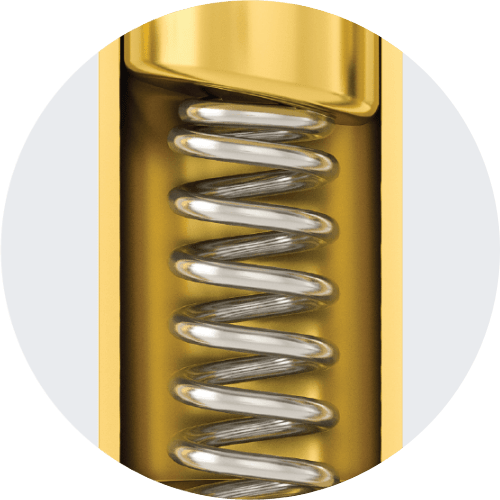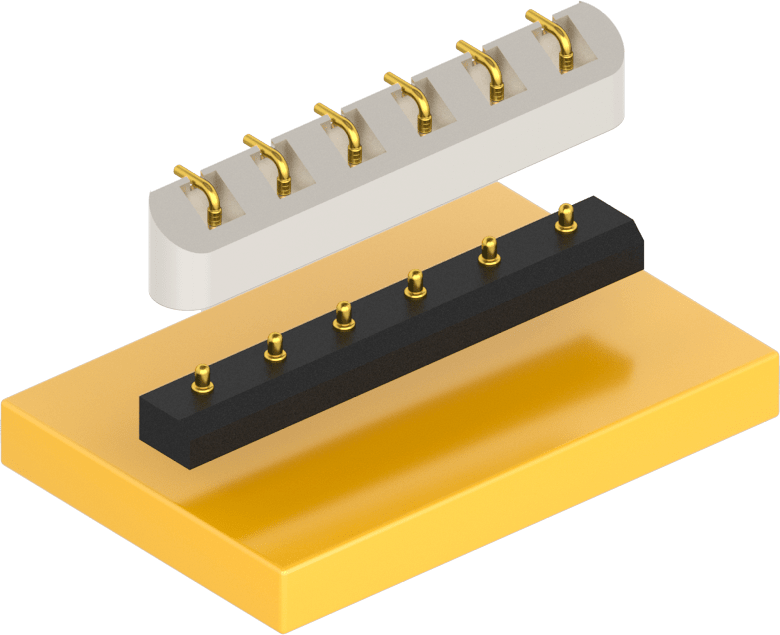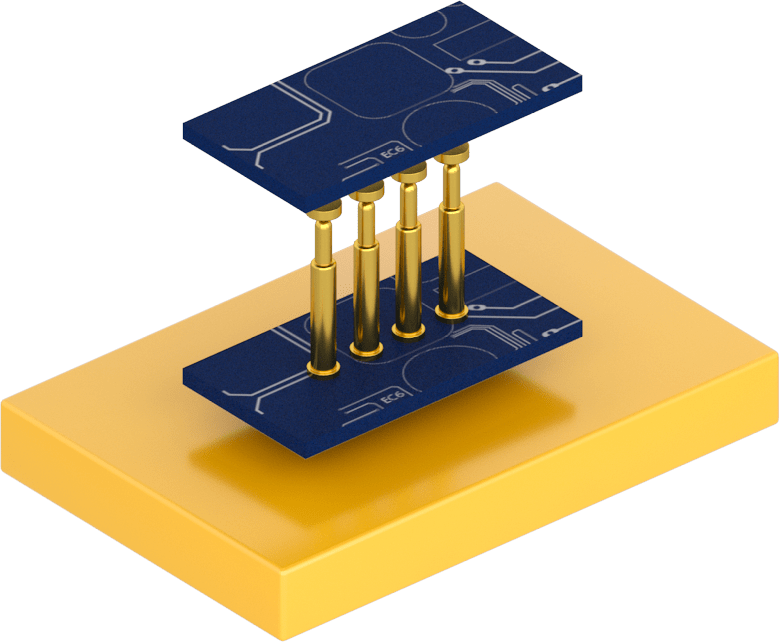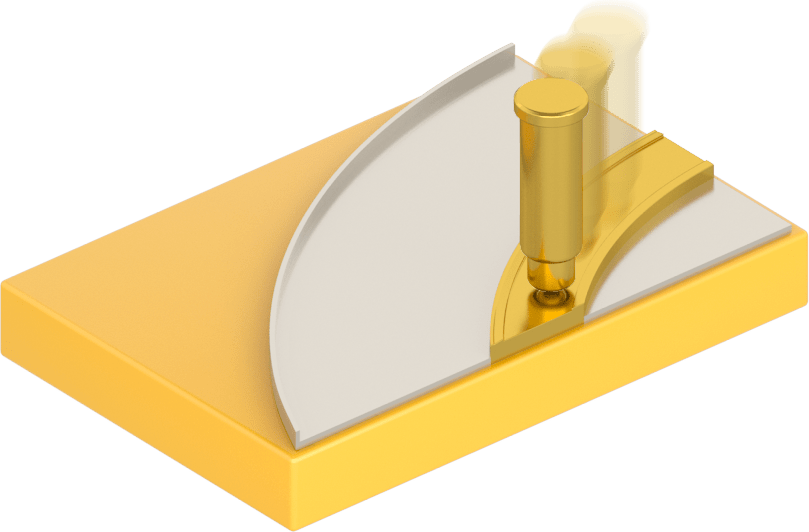
一目了然的7個優勢

插拔方便,不易脫落損壞,創造最佳使用者體驗。
通過增加的引腳接觸點數量,不同的Pogo設計可使電流最大化,且提升穩定性。
彈簧針由高精度車削機生產,不需要模具,相比其他使用沖壓加工的連接器,可較少量生產,減少成本。
電子產品的小型化趨勢仍在持續發展,沒有其他連接器比Pogo Pin具有更好的空間電流比,使用最小的空間,創造最佳的傳輸效率。
當今電子產品日益複雜的情況大大增加了組裝難度和成本,Pogo Pin不僅減少了安裝電纜及引腳的人工時間,而且為工業設計師和工程師提供了全新的機構設計與功能設置選擇。
生產中的小錯誤通常會導致連接器不穩定,因為無法正確接觸其對應零件表面,彈簧針在生產中具有極高公差耐受性,從而減少了發生錯誤的可能性。
與其他連接器類型相比,Pogo Pin的使用壽命要長得很多,因為它們可最大程度地減少零件上的機械應力。
為產品應用 找到最適合設計
反鑽孔設計可為彈簧提供額外空間,以縮短彈簧針整體長度

內部斜尾設計,使之偏移產生橫向力,創造更穩定的接觸

內部球型設計可使接觸點穩定連結,由此獲得更好的效能

球型設計可使接觸點的數量最大化,從而提升並穩定電流。
彈簧阻力越高,針軸接觸外管的受力就越好,因此形成更穩定的電流。
不同的材料類型會嚴重影響彈簧針的導電性,但適當的粗糙度對於增加電流也是很重要的。
中國探針的超级AP鍍層是產業中的黄金標準,優異的材料組成可保持極低的電阻,同時又極耐電解腐蝕,適合各種電子產品應用的完美解决方案。

當兩種不同的金屬在電解質(例如水)的存在下緊密接觸時,就可能發生電解腐蝕,種類不同的金屬具有不同的電極電位,使得其中一種金屬成為正極,另一種金屬成為負極,而產生的電流並溶解少量金屬(正極)。
酸性或鹼性環境(例如在人體皮膚上)會大大加速電解腐蝕,甚至侵蝕金和鉑等金屬。
| 電鍍 | 檢測標準 | Au(50u“)層 | APII層 | 超级AP層 |
|---|---|---|---|---|
| 鎳排放 | EN 12472:2005,A1:2009 | 含鎳處理 | 無鎳處理 | 無鎳處理 |
| 接觸電阻 | EIA-364-23 | <50 mΩ | <50 mΩ | <50 mΩ |
| 抗鹽霧腐蝕 | EIA-364-26 | 96 hr | 96 hr | 168 hr |
| 抗人體汗液腐蝕 | ISO-3160 | 96 hr | 96 hr | 168 hr |
| 表面硬度(NV) | IS06507-1 2005 | 200 | 400 | 400 |
| 耐電解時間 | 1mA,5V,間距0.6mm | <1 min | 15 min | 60 min |
彈簧針連接器可適用於多種電子產品應用,從充電設備到高頻信號傳输,多功能性構造與設計使Pogo Pin成為全方位連接器解決方案。





